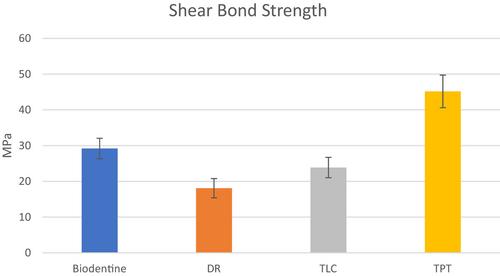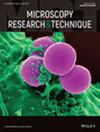Can flowable short-fiber-reinforced resins achieve a strong adhesion to bioceramics?
Abstract
This study compared the microshear bond strength (μSBS) of four calcium silicate-based cements (CSCs), TheraCal PT (TPT), TheraCal LC (TLC), Biodentine (BD), and Dia-Root Bio MTA (DR), with a short fiber-reinforced composite resin (SFRC). Forty cylindrical acrylic blocks were used, each with a center hole (diameter 5 mm, depth 2 mm). CSCs were placed in the holes (n = 10/group), and the blocks were incubated for 48 h. G-Premio BOND, a self-etching adhesive, was applied to the CSCs surfaces using a micro-applicator for 10 s and then air-dried for 5 s, followed by light curing for 20 s. SFRC materials placed in cylindrical polyethylene capsules (diameter 2 mm, height 2 mm) were polymerized for 20 s and placed over the CSCs. The samples were then incubated at 37°C and 100% humidity for 24 h, and their μSBSs were tested using an “Instron Universal Testing Machine.” Data were statistically analyzed using chi-square and Kruskal–Wallis tests. Statistically significant differences were observed between the tested CSCs. The μSBS of TPT (45.17 ± 4.56 MPa) was significantly higher (p < .05) than that of the other materials: BD, TLC, and DR had μSBSs of 29.18 ± 2.86 MPa (p < .05), 23.86 ± 2.84 MPa (p > .05), and 18.08 ± 2.69 MPa (p < .05), respectively. Considering the importance of bond strength for CSC sealing with restorative material, using SFRC over CSC was promising for improving the μSBS, adhesion, and sealing of the material.
Research Highlights
- Adhesion is critical to the success of vital pulp restorations.
- To achieve strong adhesion, the bioceramic material and the resin composite to which it is bonded are very important.
- In our study, short fiber-reinforced composite resin, which is gaining popularity, was used and found to be a promising material for improved adhesion.


 求助内容:
求助内容: 应助结果提醒方式:
应助结果提醒方式:


